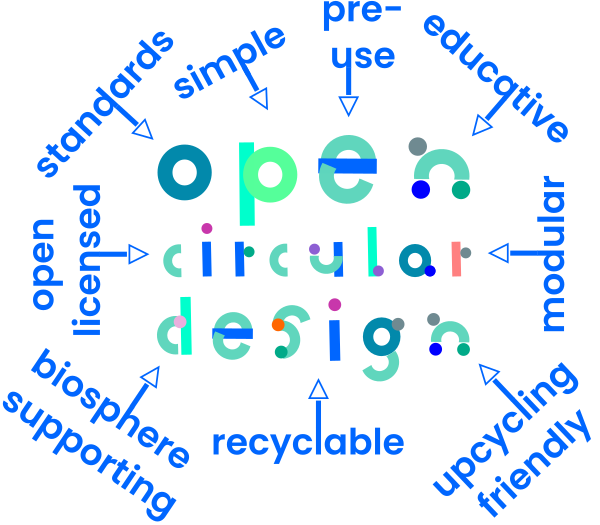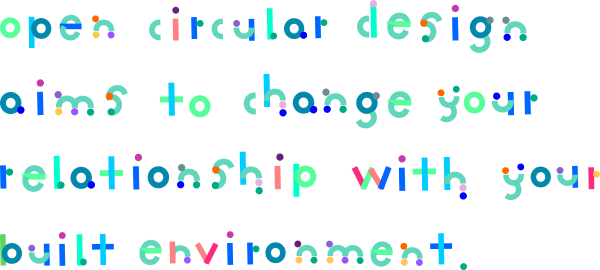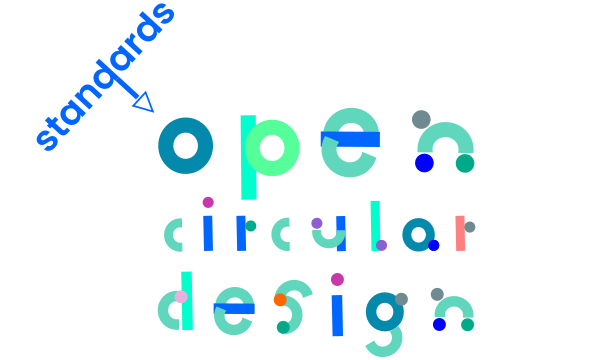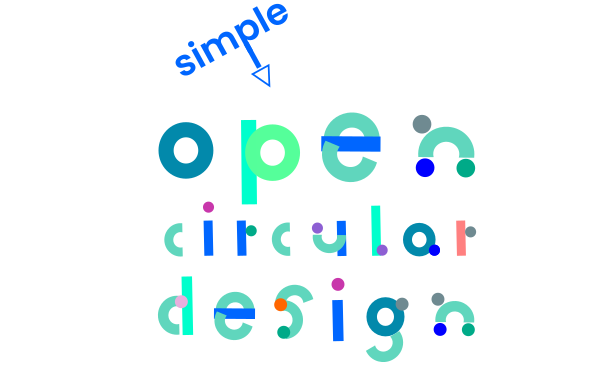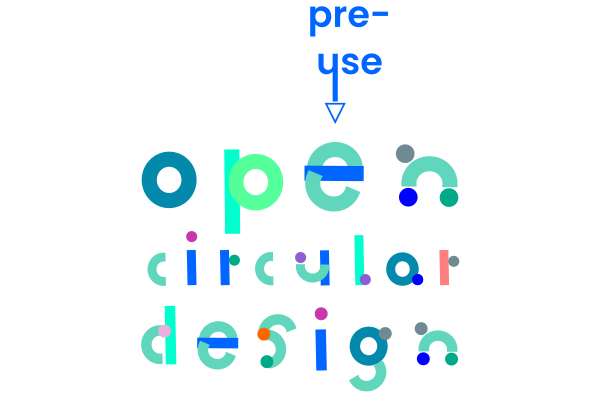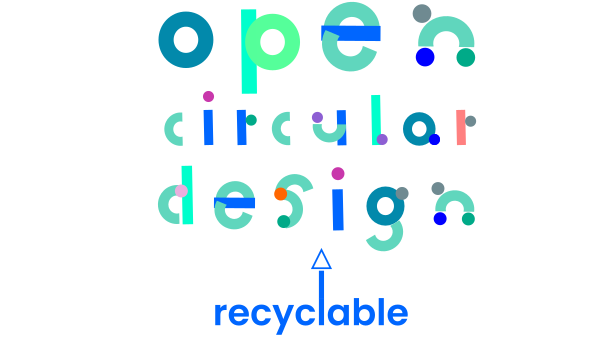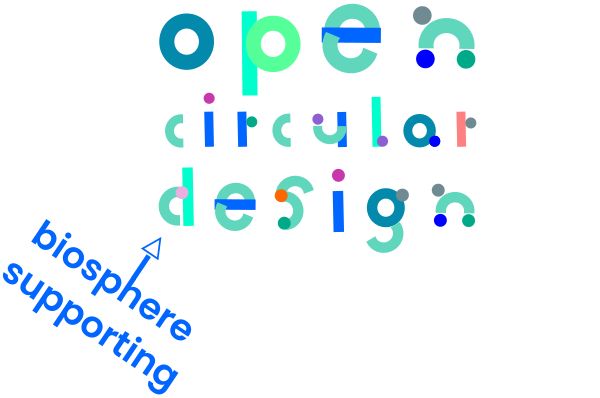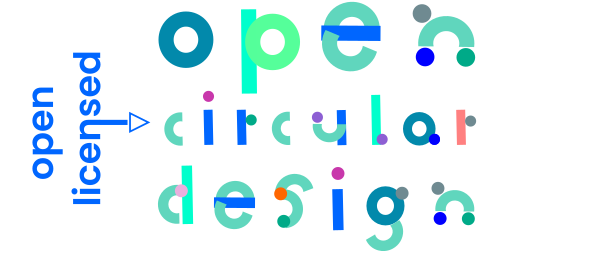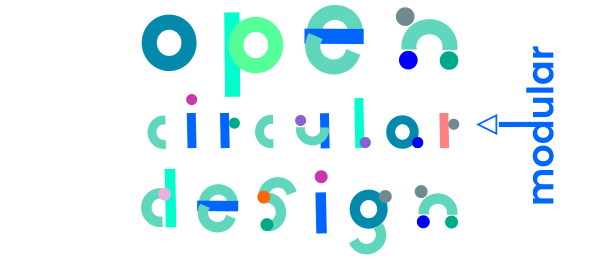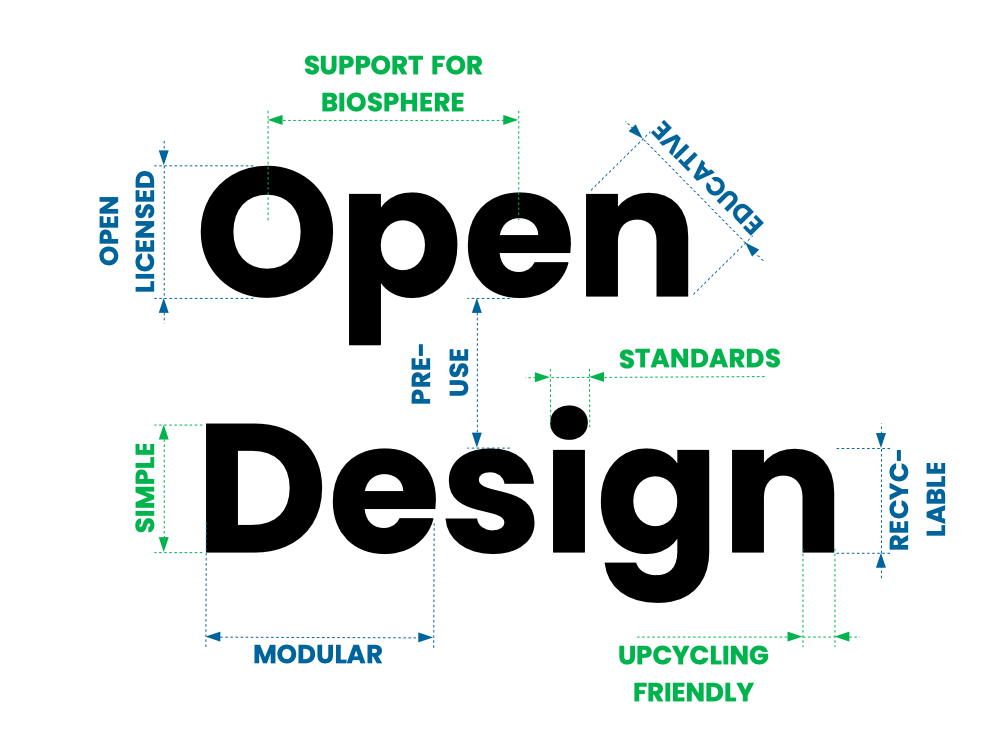*
Deutsche Version hier
*
Circular Design is the vision of a design that preserves resources and the environment by enabling future reuse of its materials and components. Repair, adaption, upgrading, reprocessing and recycling are not an afterthought, they are supported by all design decisions. Products become durable and consume little energy and material in their use and production.
However this always raises the question: Who does it, who carries out these activities? A product may be designed for repair, flexible adaptation, reprocessing and recycling, but that doesn’t automatically mean that any of it will happen. The more specialized and rare the knowledge and tools required for this, the less likely it becomes. In principle, every product can be repaired, adapted, reprocessed and recycled today. However, the necessary effort is usually too high and that is why the vast majority of it ends up in the garbage.
This is where Open Design comes into play. Open Design stands for the vision of a democratization of design. Everyone can co-design and sometimes even produce. The barriers to participate in design are lowered.
So Open Design answers the Circular Design question “Who does it?” with “Everyone” or “Potentially everyone”! Design, repair, refurbishment, adaptation and even recycling become accessible to many. This increases the likelihood that these sustainable opportunities created in a Circular Design will actually be used.
With the combination of open design and circular design, an approach for truly sustainable design appears.
*
*
Open Circular Design is a design utopia that seeks to transform our relationship with the consumer goods around us. We are getting closer to a vivid and functioning circular economy.
Mifactori has been working with this vision for many years. After many experiments 9 characteristics or guidelines have emerged that define Open Circular Design. Each makes a design more open and circular. The more come together in a design, the more sustainable it is.
Here are these 9 characteristics.
*
#educative
Open Circular Design educates.
An open circular design explains to its users how it is designed. It teaches them how it works as a circular design specifically and at the same time conveys general knowledge about circular design. This can be achieved for example through a simple and immediately understandable design. More complex designs can provide descriptions, instructions and documentation for this.
Open Circular Design shares knowledge and thus empowers participation.
*
#standards
Open Circular Design relies on standard solutions.
Standardization of components, materials and processes is the lubricating oil for functioning cooperation between companies in our economy. Circular design and its larger framework – the circular economy – essentially want to strengthen and expand cooperation in the economy. Standards are therefore particularly important here too.
The standards used in an open circular design are at best open and well documented and widely used. Documentation supports understanding and thus also repair, reprocessing and recycling. The use of widespread solutions makes it more likely that replacements or new uses for components and materials can be found. Exotic special solutions are usually the opponents of circularity.
*
#simple
Open Circular Design aims to be easy to understand and create.
The future of a product is mostly determined by those who own it. Technically simple and immediately understandable design makes constructive work with it accessible to many. This can include repair, reuse, adaptation, reprocessing and even material recycling.
It is probably impossible to make all products so simple that they are immediately technically understandable for everyone. However one should always try to come as close as possible to this ideal.
*
#upcycling-friendly
Open Circular Design supports the use of what is already used.
With “upcycling” old components, materials or products become something new again. Open circular design accommodates this by inventing designs that can be produced from such components and materials ideally in industrialised processes. The same open circular design can be efficiently produced industrially from fresh wood and second-hand wood. Design always reacts to the specifications of industrial production. Open Circular Design reacts to the requirements of industrial production with upcycling material.
The more solutions that do this the more likely it becomes that we can keep materials in circulation longer.
*
#pre-use
Open Circular Design uses creatively without wasting potential.
We learned the term “pre-use” from the architecture collective “Refunc”. Pre-use contains the word “reuse”. Pre-use also includes creative repurposing . A jam jar becomes a flower vase, a broomstick becomes a curtain rod, a flower pot becomes a lampshade etc. Products are used as more universal building blocks.
The key to pre-use however is the preceding “p”. This alludes to “preserve”.
The creative conversion does not change what is used, but “preserves” it. The objects remain intact for their original use. The curtain rod can be turned into a broomstick again, the flower vase into a jam jar again, and the lampshade into a flower pot again. That is why the glass is not painted, the broomstick retains its threaded attachment and the flower pot does not get any extra holes or interior paint. The architecture collective “Umschichten” borrows construction material for short-term projects. The material is then not painted, glued, sawn or drilled, but rather clamped, tied or braced. It is retained as a raw material and can therefore be returned to the hardware store afterwards.
For us at Mifactori, pre-use is a nice variation on the most important idea of circularity: Preserve potential for the future! Any change to a material is hard for us and runs counter to our instincts. We’d rather change a design to keep a material intact than to change a material to keep an early design idea. So everything remains universal, lively and connectable for the future. If interventions are unavoidable, we always try to create components that are as universal and durable as possible. For example by manufacturing them within common open circular standards (such as the 3erlin grid).
*
#recyclable
Open Circular Design makes the recycling of materials easy.
The recycling of materials is perhaps the best-known side of circularity. In the best case scenario, the materials are recovered from products in their pure form for a new high-quality use. Glass bottles are collected, melted down and poured into new bottles. Where repair and reuse are no longer possible the often energy-intensive material recycling is the last possible cycle.
Material recycling must be supported by the design. First of all by the choice of materials. Materials are used for which there are common and inexpensive recycling processes available. Second construction is important. If a product combines several materials it should be quick and easy to separate them from another. So each material can be fed separately to its appropriate recycling process. Sometimes however separation is not necessary because the product consists of only one single material (mono-material), or because all components biodegrade under the same easy to find conditions.
*
.
#biosphere supporting
Open Circular Design maintains and sustains a productive biosphere.
Nature produces a multitude of services for us. Trees produce oxygen and wood, bees fertilize fruit trees, earthworms dig up the ground etc. Open circular design supports nature. Its diversity and productivity is preserved and even expanded.
For this it avoids toxic chemicals wherever possible. Niches are left or created for nature for example through flower strips or deer crossing points and other things. Rotting is nature’s recycling: Compost is a recycling center where fungi, worms and bacteria convert dead plants into nutrients for new things. There are a wide variety of materials that are biodegradable. Open Circular Design likes to use them.
*
.
#open licensed
Open Circular Design makes sure that property rights don’t harm circularity.
Circular Design wants to enable actions such as repair, reprocessing and recycling for regular people and professionals alike. With some designs, property rights can become a problem here. Because property rights like “patents” or “design rights” want to monopolize the professional handling of a design. Others are not allowed to work with a design. This can mean that effective repair, processing and recycling are made impossible legally. Intellectual property rights can block circularity. Maybe I have created a technical solution that can be perfectly and easily reused in many ways. However, it will hardly be effective for sustainability if active design protection prevents others from making use of the possibilities. The world is big and networked, I will hardly be able to do it all by myself. I need to enable others also legally.
As a designer of sustainable design, I always have to ask myself if my property rights undermine the sustainability I might have put into my design. If the answer is yes, then I should take proactive countermeasures. One of them is open licensing according to the specifications of open source hardware. The “CERN Open Hardware License” and the “TAPR License” are public licenses specially created for physical products. These licenses give others the legal opportunity to work professionally with my design. You can use them if you have property rights registered. Another way is to hand my design over to the general public and to completely forego applying for property rights. This step should be clearly communicated. Others should know that there are no legal risks involved working with my design. More about legal questions can be found at mifactori.de/category/legal/
*
#modular
Open circular design is modular.
Modularity is practically the overriding principle of Open Circular Design. All eight of the aforementioned properties can be viewed in a broader sense as varieties of modularity or forms of support for it. Each and every one of them aims to make it easy to separate the components of a design from it and use them in a new and different way. With six classic 2 × 4 blocks like those from LEGO®, 915,104,765 different combinations can be built. You can always jump back and forth between these combinations. They are potentially all there at the same time and one after the other. This is the kind of universality and openness to the future that Open Circular Design wants to bring to life.
*
*
Open circular design is the opposite of most of what we see today as “author’s design”. “Author’s design” often tries to shine with unique shapes, materials and techniques. However, these shapes, techniques and materials are usually dead ends for reuse, repair and recycling. They work in just one design and only fit into the hazardous waste outside of it.
This type of author’s design became popular in the 20th century and it still seems to be triumphant. But it is not fit to bring us through the 21st century. This is not a design for a future that enables a good life for many instead of just a few.
*
Open Circular Design tries to allow its constituents and the world as many different productive futures as possible. Through design and despite of design. It turns people into contributors to a sustainable circular economy instead of reducing them to passive consumers who are allowed to function solely as a link between the factory and the waste incineration plant. Sustainable cycles must be able to take place everywhere, even in the small and smallest! “Open” is the key to this. Let’s go!
*
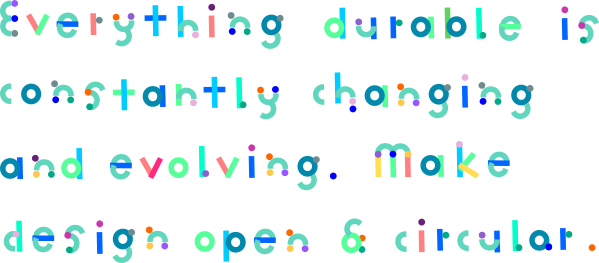
*
*
#credits
Text written for the exhibition “Rückbauschau” of “Team Zirkuläres Bauen” (Team Circular Construction)
Text & graphics by: Lars Zimmermann, Mifactori.de
License text & graphics: Creative Commons Attribution 4.0.
Downloads: Graphics in vector format (SVG)
Earlier Versions:
- Vs 1.0.PDF (Posted on April 2nd 2020, replaced on May 28 2020 to make the connection to Circular Design stronger)
- Vs 1.1 (Vs 1.1. was revised for clearer language in June 2021.)
- Vs 1.2 (June 2021 – November 2021)
Visuals earlier versions:
Download: “Open Design” editable version (.odg vector file) created/edit with Libre Office.
Download: “Circular Design” editable Version (.odg vector file) created/edit with Libre Office. | PDF-Version | PNG Large Version | PNG Small Version
The visuals from version 1.0 to 1.2 are licensed under CC0 1.0 Universal Public Domain Dedication which means there are no restrictions.
*
